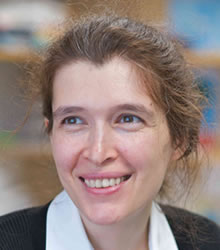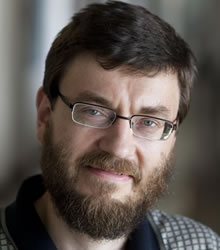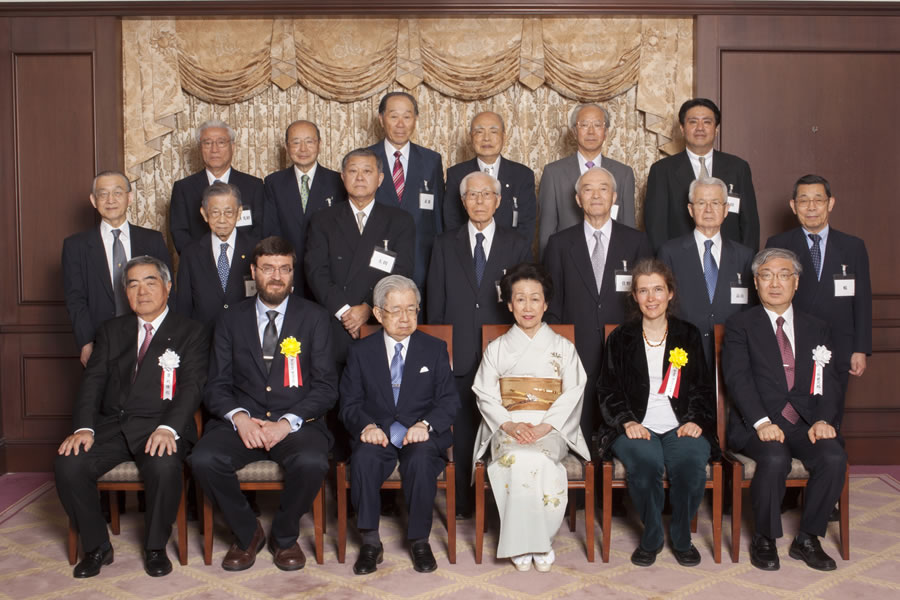The Awardee of the 2014 Prince Hitachi Prize for Comparative Oncology
"Mechanism of cancer resistance of the naked mole rats"
 Vera Gorbunova
Vera GorbunovaProfessor of Biology and Oncology
Department of Biology
University of Rochester
Personal History Outline
Dr. Gorbunova earned her B.Sc. degrees at Saint Petersburg State University, Russia and her Master and PhD degrees at the Weizmann Institute of Science, Israel. Her thesis work was focused on the mechanisms of genome stability and transposable elements in plants. For her postdoctoral work Dr. Gorbunova decided to change her research focus to the processes of cancer and aging due to their importance to the society. Dr. Gorbunova trained in the laboratories of Olivia Pereira-Smith and followed by the laboratory of John Wilson at the Baylor College of Medicine. During those years Dr. Gorbunova gained experience in mammalian cell culture, cancer biology and cell senescence.
In 2004 Dr. Gorbunova and Dr. Seluanov established research laboratory at the University of Rochester.
The Awardee of the 2014 Prince Hitachi Prize for Comparative Oncology
 Andrei Seluanov
Andrei SeluanovAssistant Professor
Department of Biology
University of Rochester
略歴
アンドレイ セルアノフ博士は、ロシアのセントペテルスベルグ州立大学で学士号を、イスラエルのワイズマン科学研究所で博士号を取得した。彼の学位論文のテーマは、細菌における膜タンパクの生合成であった。博士号取得後の研究テーマとして、彼はがんと老化を選んだ。そしてワイズマン研究所のVarda Rotter教授の研究室、ベイラー医科大学のOlivia Pereira-Smith およびJohn Wilson教授のもとで研鑽を積んだ。がん化と老化の研究を進めるにあたり、セルアノフ博士は人跡未踏の道を選んだ。伝統的なモデル動物を扱う事をせず、彼は極端にがんが出来にくく又長寿のほ乳類動物を選んだ。
2004年以来、セルアノフ博士は、ゴルブノヴァ博士と共にロチェスター大学の独立した研究室で共同研究を進めている。
Personal History Outline
Dr. Seluanov earned his B.Sc. degrees at Saint Petersburg State University, Russia and his PhD degrees at the Weizmann Institute of Science, Israel. His thesis work was focused on membrane protein biogenesis in bacteria. For his postdoctoral work Dr. Seluanov chose to study cancer and aging. Dr. Seluanov trained in the laboratories of Prof. Varda Rotter at the Weizmann Institute, Olivia Pereira-Smith and John Wilson at the Baylor College of Medicine. To address the problems of cancer and aging from a new angle, Dr. Seluanov chose an unbeaten path. Instead of studying traditional model organisms, he chose to work on mammalian species that are exceptionally resistant to cancer and long-lived.
In 2004 Dr. Gorbunova and Dr. Seluanov established research laboratory at the University of Rochester.
Academic Achievement
In 2004 Dr. Gorbunova and Dr. Seluanov established research laboratory at the University of Rochester. To tackle the problems of aging and cancer, they chose an innovative comparative biology approach. They assembled a collection of primary cells and tissues from 20 rodent species differing in lifespan and susceptibility to cancer. Using this collection they identified rules that control evolution of tumor suppressor mechanisms depending on the species lifespan and body mass. They found that evolution of large body mass drives the evolution of replicative senescence, while long lifespan in small animals is associated with evolution of telomere independent tumor suppressor mechanisms.
More recently their efforts were focused on the long-lived and cancer-resistant rodent, the naked mole rat. The naked mole rat displays exceptional longevity, with a maximum lifespan exceeding 30 years. In addition, naked mole rats show an unusual resistance to cancer. To study naked mole rat cancer resistance, they established breeding colonies of naked mole rats at the University of Rochester and developed techniques for isolation and culture primary cells of naked mole rats. The discovery was made when they noticed that the culture media in plates with naked mole rat cells was becoming very viscous and decided to identify the substance that conferred this viscosity. They determined that the viscosity was conferred by hyaluronan. Hyaluronan is a linear polysaccharide, and a major non-protein component of extracellular matrix. Remarkably, naked mole-rat fibroblasts secrete extremely high molecular weight hyaluronan, which is over five times larger than human or mouse hyaluronan. Perturbation of the signaling pathways sufficient for malignant transformation of mouse fibroblasts fails to transform naked mole-rat cells. However, once high molecular weight hyaluronan was removed, naked mole-rat cells become susceptible to malignant transformation and readily formed tumors in mice. This experiment established hyaluronan as the key determinant of naked mole rat’s striking resistance to cancer.
This discovery has high translational potential as hyaluronan can be administered to humans. These findings open new avenues for hyaluronan application in cancer prevention and life extension by applying hyaluronan directly or by using hyaluronan metabolism enzymes as targets for small molecule inhibitors.
Drs. Gorbunova and Seluanov have over 50 research papers including publications in Nature and Science. Their work received awards from the Ellison Medical Foundation, the Glenn Foundation, American Federation for Aging Research, and the National Institutes of Health. Their work on cancer-resistance in the naked mole rat was awarded the Cozzarelli Prize from PNAS for outstanding scientific excellence and originality and a prize for research on aging from ADPS/Alianz, France.


